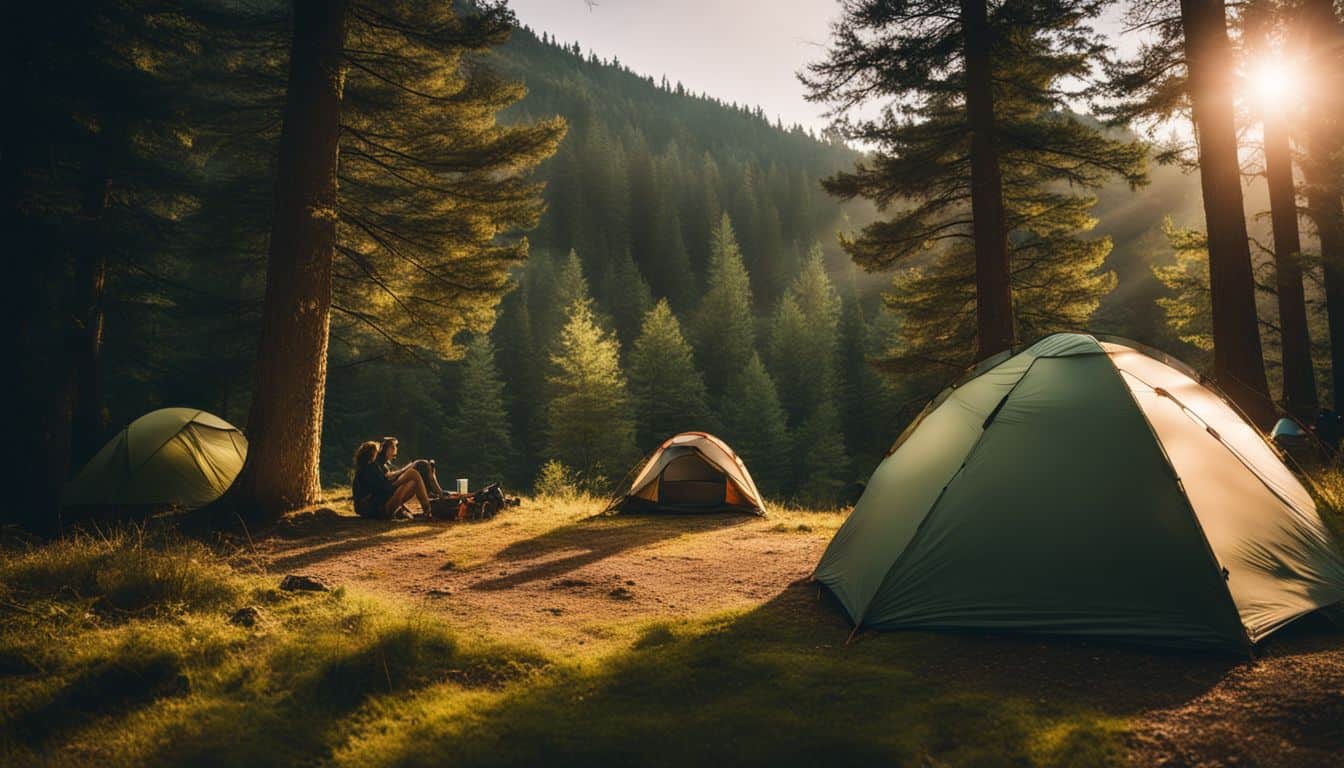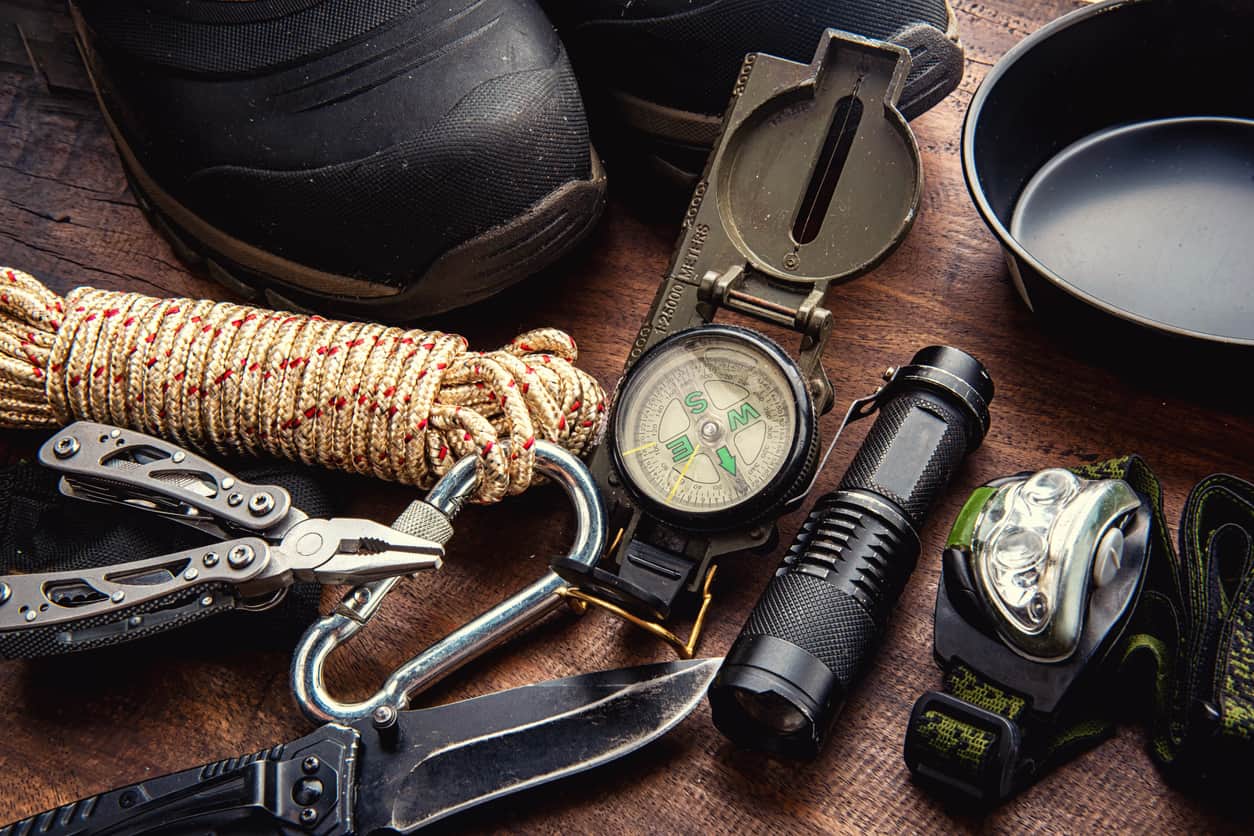For those seeking a true wilderness experience, dispersed camping offers unparalleled freedom and connection with nature. However, this type of camping requires careful gear selection to ensure both comfort and environmental responsibility. This guide will help you choose the essential gear for dispersed camping.
Introduction
Dispersed camping, also known as backcountry or wild camping, involves setting up camp outside of designated campgrounds. While it offers a more authentic outdoor experience, it also requires self-sufficiency and adherence to Leave No Trace principles. This type of camping allows you to immerse yourself in nature, away from the crowds and amenities of developed campgrounds.

However, it comes with greater responsibility. You must be prepared to handle all aspects of your trip, from finding a suitable campsite to managing waste and protecting the environment. Dispersed camping often requires more planning and skill than traditional camping, but the rewards of solitude and unspoiled nature make it a favorite among outdoor enthusiasts.
Core Camping Equipment
Shelter
Choose a shelter that balances weight, durability, and weather protection. Options include tents, hammocks, and bivy sacks. Don’t forget a ground cloth or tarp for additional protection. Your choice of shelter will depend on factors such as the climate, terrain, and personal preference.
Tents offer the most protection but can be heavier, while hammocks are lightweight but require suitable trees. Bivy sacks are ultralight but offer minimal space. Consider the seasons you’ll be camping in and the potential for extreme weather. A ground cloth or tarp can provide extra protection from moisture and can serve multiple purposes in your camp setup.
Sleeping System
Invest in a quality sleeping bag rated for the temperatures you’ll encounter. Pair it with an insulating sleeping pad for comfort and warmth. Your sleeping system is crucial for a good night’s rest and safety in cold conditions. Choose a sleeping bag with a temperature rating suitable for the coldest temperatures you expect to encounter.
Down bags are lighter and more compressible but lose insulating properties when wet, while synthetic bags perform better in damp conditions. An insulating sleeping pad not only provides comfort but also crucial insulation from the cold ground. Consider the R-value of the pad, which indicates its insulating effectiveness.
Cooking and Food Storage
Stoves and Fuel
Opt for lightweight, efficient stoves. Canister stoves are convenient, while liquid fuel stoves perform better in cold conditions. Canister stoves are easy to use and maintain, making them popular for backpacking. They work well in most conditions but can be less efficient in very cold weather.
Liquid fuel stoves are more versatile, working well in cold temperatures and at high altitudes. They also allow you to see how much fuel is left. Consider the length of your trip, the temperatures you’ll encounter, and the availability of fuel when choosing your stove.
Cookware and Utensils
Choose lightweight, durable materials like titanium or aluminum. Look for multi-use tools to reduce weight. Titanium is extremely lightweight and strong but can be expensive. Aluminum is a more affordable option that conducts heat well.
Look for pots with lids that can double as plates or frying pans. A spork can replace separate utensils. Consider a collapsible bowl or cup to save space. Remember, the goal is to minimize weight while still having the tools you need to prepare meals comfortably.
Food Storage
Proper food storage is crucial in the backcountry. Use bear canisters or bear bags to protect your food and local wildlife. In bear country, a bear canister is often required and provides the most secure storage. In other areas, a bear bag hung properly can suffice.
Proper food storage not only protects your supplies but also prevents wildlife from becoming habituated to human food, which can lead to dangerous encounters. Store all scented items, including toiletries, with your food. Always check local regulations regarding food storage in the areas you plan to camp.
Navigation and Safety
Maps and Compasses
Carry both digital and paper maps. Know how to use a compass for backup navigation. Digital maps on smartphones or GPS devices are convenient and can provide real-time location information. However, batteries can die, and electronics can fail. Always carry a paper map and compass as a backup. Practice using these tools before your trip.
Familiarize yourself with the area’s topography and key landmarks. Remember, navigation skills are crucial for safety in remote areas and can make the difference between an enjoyable trip and a dangerous situation.
Emergency Communication
Consider a satellite messenger or personal locator beacon for remote areas. These devices can be lifesavers in emergencies, allowing you to call for help even when cell phone coverage is nonexistent. Satellite messengers often allow two-way communication and can send preset messages to loved ones.
Personal locator beacons are designed solely for emergencies but are extremely reliable. While these devices add weight to your pack, they provide invaluable peace of mind and safety in remote locations.
Clothing and Footwear
Layering Systems
Use a layering system for versatility in changing conditions. A good layering system typically consists of a moisture-wicking base layer, an insulating mid-layer, and a waterproof/breathable outer layer. This allows you to adjust your clothing to match your activity level and the weather conditions.
Avoid cotton, which retains moisture and can lead to hypothermia. Instead, opt for synthetic or wool materials that retain insulating properties when damp. Remember, the ability to add or remove layers is key to maintaining comfort in variable conditions.
Footwear
Choose appropriate footwear for your terrain and break them in before your trip. The right footwear depends on the terrain, weather conditions, and length of your trip. Sturdy hiking boots provide ankle support and protection on rough trails, while lightweight trail runners might be suitable for less demanding terrain.
Whatever you choose, make sure to break in your footwear before your trip to prevent blisters. Consider bringing camp shoes for comfort at the end of the day. Don’t forget quality socks – they’re just as important as the shoes themselves.
Leave No Trace Gear
Waste Management
Bring tools for proper waste disposal, including a trowel for catholes. A lightweight trowel is essential for digging catholes to properly dispose of human waste. Bring biodegradable toilet paper and a sealable bag to pack it out.
In some areas, you may be required to pack out all human waste – be prepared with the appropriate waste bags if this is the case. Proper waste management is crucial for maintaining the health of the ecosystem and the enjoyment of future visitors.
Campfire Alternatives
Consider alternatives to campfires, such as lightweight lanterns and stoves. While campfires are traditional, they can have a significant impact on the environment. Many areas prohibit campfires due to fire risk or ecological concerns. LED lanterns provide ample light for camp activities and are much safer.
Your camping stove can provide warmth for cooking and boiling water. If fires are allowed and you choose to have one, use established fire rings, keep the fire small, and fully extinguish it before leaving.
Comfort and Convenience Items
Balance comfort with weight considerations. A lightweight camp chair can greatly enhance your experience. While minimalism is often emphasized in dispersed camping, a few comfort items can significantly improve your trip. A compact, lightweight camp chair or sit pad can make meal times and relaxation much more enjoyable.
Other items to consider might include a small pillow, a book, or a packable musical instrument. Just remember to balance these comfort items with the weight of your pack and the distance you’ll be traveling.
Gear Organization and Protection
Use a well-fitting backpack and organize your gear with dry bags to keep everything accessible and protected. A good backpack should fit your body well and distribute weight effectively. Use dry bags or stuff sacks to organize gear within your pack – this not only protects your gear from moisture but also makes it easier to find what you need quickly.
Keep frequently used items easily accessible. Consider using a pack cover or lining your backpack with a trash bag for additional water protection. Proper gear organization can make your camping experience much more enjoyable and efficient.
Conclusion
Choosing the right gear for dispersed camping is crucial for both your comfort and the preservation of the natural environment. As you gain experience, you’ll refine your gear choices to suit your personal needs and camping style.
Remember, the goal is to enjoy nature while minimizing your impact. With the right gear and mindset, you can have incredible experiences in some of the best dispersed camping spots while preserving them for future generations.

Leave a Reply